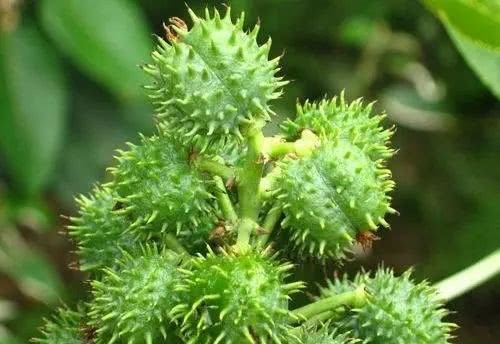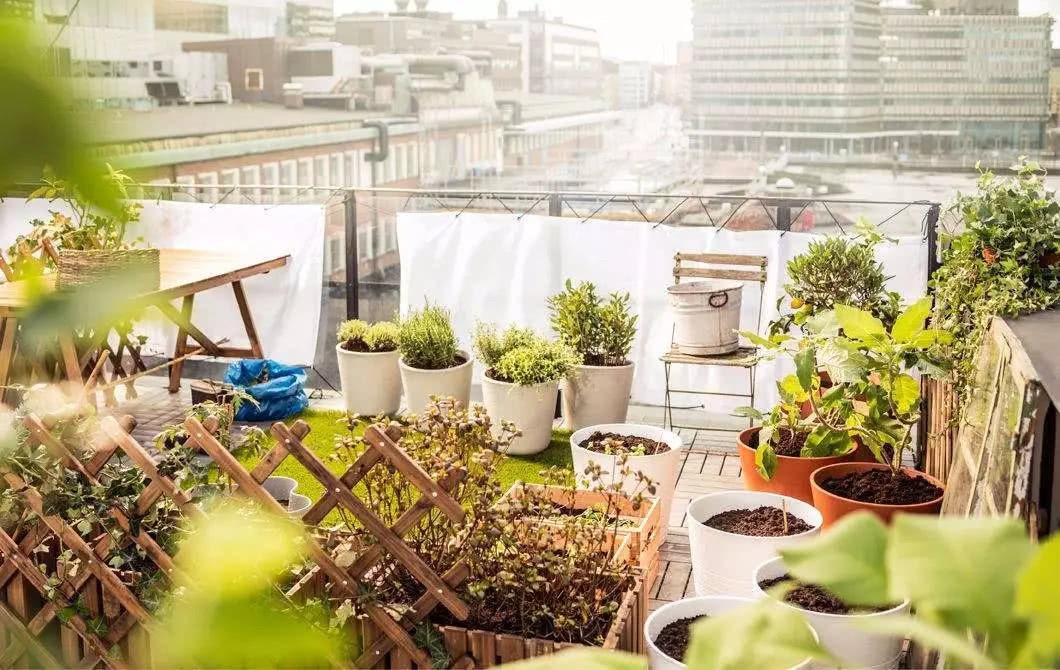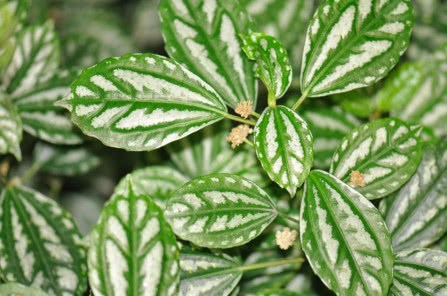Please stay away from the eight most poisonous plants in the world.

It is said that the more beautiful things are, the more poisonous they are, and so are plants. Today, I would like to introduce to you the eight most poisonous plants in the world.
1. Castor bean
Castor, or castor, is a widely cultivated plant that can extract castor oil and can also be used as an ornamental plant. Neither of these effects can lead you to the conclusion that the plant contains a deadly ingredient: ricin.
The content of ricin in castor is small and is mainly concentrated on the seed wall. Seed poisoning is rare, and children or animals sometimes get in touch with it, but once it does, it can be fatal. Its seeds are brownish green, and only three seeds can kill the children who devour it.
2. Gut-breaking grass
Heartbroken grass is a yellow flower, especially fresh and elegant, similar to honeysuckle, many people mistakenly regard it as honeysuckle and poisoned.
The whole plant is highly toxic, especially in roots and tender leaves. This plant has been classified as a drug in Chinese Materia Medica in all previous dynasties, which is highly toxic and can die quickly. Generally not for medicinal use, but some areas are still used to treat rheumatic arthralgia and other difficult diseases.
3. Hen beads
Chicken mother bead, also known as beauty bean, Acacia bean, is a poisonous plant of the genus Acacia in Leguminosae, which is distributed in pan-tropics. The seed is very beautiful, oval, 2/3 red and 1/3 black at the top. The seed can be used for decoration and is often made into jewelry and is loved by many people.
The seeds of mother beads contain a protein called mother bead toxin, which is so toxic that it can be poisoned or even killed when eaten by mistake.
4. Oleander
Oleander is a small shrub with many branches on its trunk and branches, and the smallest twig is green. The flowers of oleander have fragrance. The flowers grow at the top of the branches, and they gather together like an open umbrella. The shape of the oleander peach blossom is like a funnel, the petals overlap each other, there are two kinds of red and white, among which, red is its natural color, and "white" is a new variety cultivated for a long time.
The poison of oleander is so powerful that, in fact, people can be poisoned when they eat bees and collect the honey made from oleander blossoms. Oleander is an attractive plant, and despite its deadly reputation, people still like to grow it for decorative purposes.
5. Mandala
Mandala is also called mandala. Herbs, 1-2 m tall, erect stems, ovoid leaves, summer flowering, kaleidoscope-shaped, Corolla funnel-shaped.
The whole grass of Datura stramonium is poisonous, and the fruit, especially the seed, is the most toxic, followed by the tender leaf, and the toxicity of the dried leaf is less than that of the fresh leaf. Mandala poisoning, generally half an hour after eating, 20 minutes at the earliest symptoms, no more than 3 hours at the latest, symptoms mostly disappear within 24 hours or basically disappear, serious cases after 24 hours into drowsiness, spasm, cyanosis, and finally dizzy death.
6. Water hemlock
Water hemlock is an upright wild plant with small white flowers, beautiful and attractive flowers and purple stripes on its leaves. The root of water hemlock is white, and sometimes people mistake it for Dutch windbreak. In fact, it is listed by the United States Department of Agriculture as "the most toxic plant in North America."
Water poison celery contains toxic apigenin, a toxin that destroys the central nervous system. The average height of water hemlock is 0.6 to 1.3 meters and can grow to 1.8 meters high. The smell is uncomfortable and poisonous, and it is more toxic than hemlock.
7. White snake root grass
The white snake root is a poisonous plant growing in North American grasslands and pastures, one of the most poisonous plants in the world, and every part of it contains Perrin toxin (an unsaturated alcohol that can cause muscle tremors and eventually death in livestock). When animals eat this plant, such as cattle, it can cause a disease called tremor. Drinking milk from cows that once ate white snake root grass can cause a fatal milk disease, Nancy, the mother of former US President Lincoln. Hanks died of this disease.
8. Sea lemon tree
The sea lemon tree is a plant growing in southwestern India, its fruit is highly poisonous, this fruit is often used as a suicide tool, so this kind of tree is also called "suicide tree". During flowering, the flowers show white petals and smell of jasmine, and the sea lemon fruit is green and looks like a small mango, so many children mistake it for mango when they see it for the first time, and eventually die.
- Prev

If you don't know the reason why the potted leaves turn yellow, you are embarrassed to call yourself a gardener.
The potted flowers on the balcony often appear the phenomenon of leaf yellowing during the growing period. For this reason, there are many. And complicated. Because the leaf yellowing phenomenon is caused by one reason, and some are caused by a variety of reasons.
- Next

The smoke killer in the plant is essential for the kitchen
Coldwater flower has the title of "smoke killer", which has certain absorption effect on harmful gases such as soot and formaldehyde. It is suitable for cultivation in newly renovated rooms and kitchens. It can not only pollute the air but also decorate the room.
Related
- Wuhan Hospital Iron Tree Blooming Result Was Instantly Frightened by the Gardener Master
- Which variety of camellia is the most fragrant and best? Which one do you like best?
- What is the small blue coat, the breeding methods and matters needing attention of the succulent plant
- Dormancy time and maintenance management of succulent plants during dormancy
- Minas succulent how to raise, Minas succulent plant pictures
- What are the varieties of winter succulent plants
- How to raise succulent plants in twelve rolls? let's take a look at some experience of breeding twelve rolls.
- Attention should be paid to water control for succulent plants during dormant period (winter and summer)
- Watering experience of twelve rolls of succulent plants
- Techniques for fertilizing succulent plants. An article will let you know how to fertilize succulent plants.

